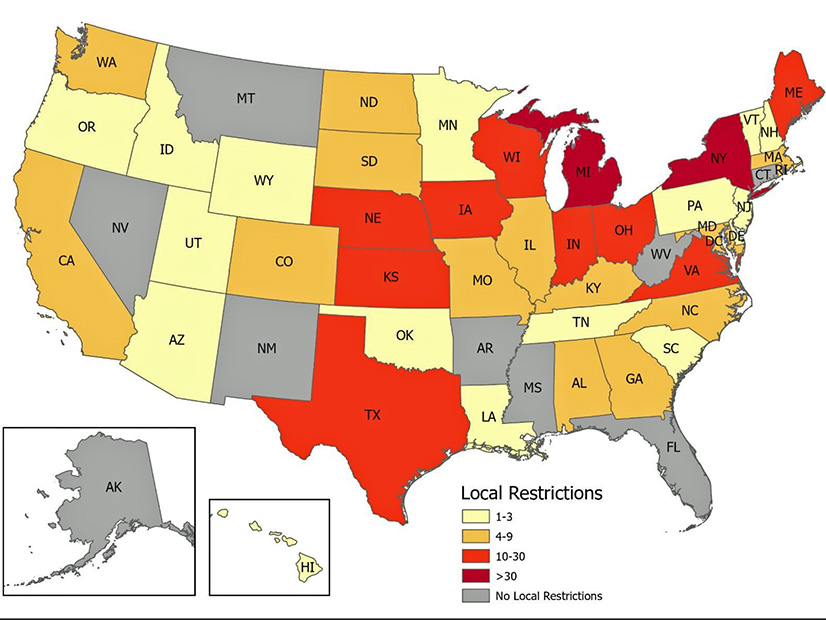Renewable Development Faces Regulatory Tangle
Reports Detail Growing List of State and Local Restrictions

Local restrictions on renewable energy development are mapped across the U.S. | Sabin Center for Climate Change Law
Jun 18, 2024
|
Two new reports examine the profusion of local and state regulations affecting renewable energy development.


